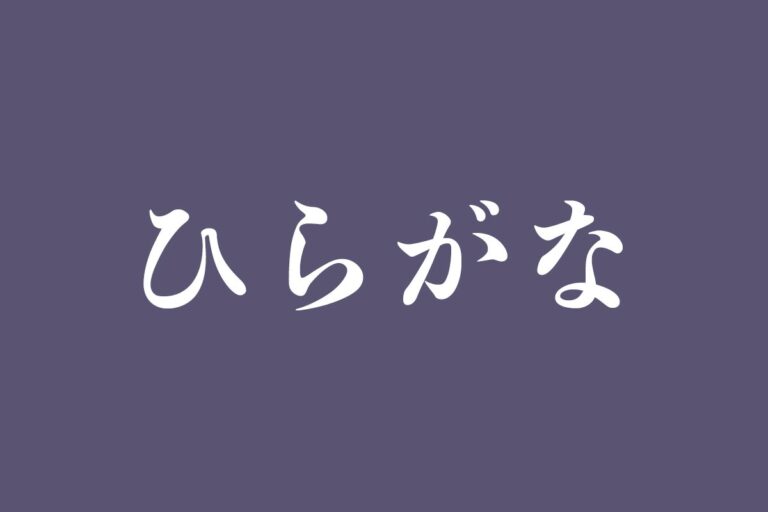Learn about hiragana, how these characters are used in Japan, and how hiragana differs from katakana.
What is hiragana?
Hiragana are the the basic letters of the Japanese language, and in modern Japanese education, it is the first of the alphabets taught.
In general, hiragana education begins in earnest in the first year of elementary school, but even before that, there are many opportunities to come into contact with hiragana in daily life, as well as at yochien or hoikuen.
You can use hiragana to express everything in Japanese, without kanji usage
Hiragana can be used to express all Japanese words. It’s a bit of a challenge, but if you try to write an entire conversation in hiragana, you can do it. However we don’t recommend that as it’s messy – 一生懸命 looks much neater than いっしょうけんめい for example.
How long has hiragana been in use?
It has been thought that hiragana was perfected in the first half of the 10th century. Hiragana was born from Chinese characters that were introduced from China. In Japan, there were originally no letters, but around the 5th century, a method of writing Japanese using Chinese characters was developed by assigning a Chinese character with the same sound to each sound in the Japanese language.
List of hiragana
For a good list, see this link: https://www.nhk.or.jp/lesson/en/letters/hiragana.html
Why is there both hiragana and katakana?
It is often said that the Japanese language is difficult. There are several possible reasons for this, but one factor is the combined use of kanji, hiragana and katakana.
By the way, why are hiragana and katakana, two types of kana, both used? At some point in the long history of the Japanese language, it would have been better to unify them into one or the other.
The reason for this lies in the social structure of the Heian period.
Before the birth of kana, only kanji was used.
To begin with, there were only Chinese characters in Japan. Therefore, the Japanese language was initially written entirely in Chinese characters.
But of course, this was terribly difficult to do. So, eventually, each sound was expressed by borrowing the reading of a Chinese character. This is called Manyo-kana.
However, there was also a problem with this. There are so many strokes that it was very difficult to write. Therefore, the idea of omitting the letter forms was born. That’s how we came up with hiragana and katakana.
Katakana is centered on monks
Katakana, on the other hand, was also born in the early Heian period. While hiragana was based on the Man’yo kana, katakana was created by omitting the characters.
So where was katakana used? The correct answer is that it was used in Chinese writing.
In the Heian period (794-1185), Chinese writing was an essential education for aristocrats. In order to read and understand difficult Chinese texts, it was necessary to add sentences such as kana. However, the space between the lines was too narrow to be written in Man’yokana. This is where katakana was born.
In other words, the situations in which katakana was used were distinctly different from those in hiragana. Katakana was used by monks who read and understand Chinese texts, and by aristocrats who studied them.
Thus, it is believed that both hiragana and katakana survived because they were used by different people and in different situations.
Master the Basics: Hiragana, Katakana and Kanji – Online

